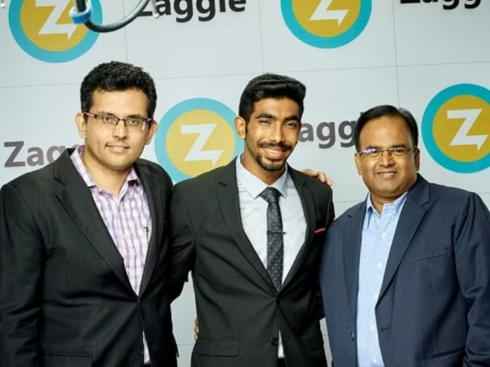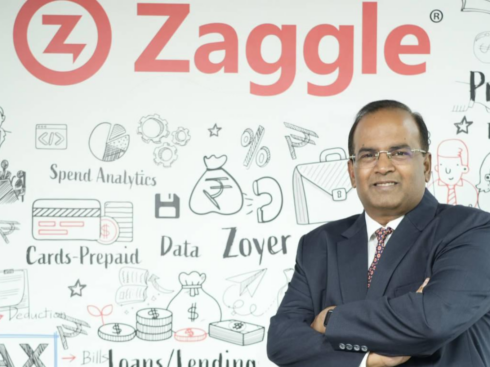
SUMMARY
Indian women's contribution to the GDP is a mere 17% in comparison to China’s 40%
Equal employment opportunity for female can add more than $770 Bn to Indian GDP by 2025
The unpaid work minutes for urban women workforce is 10.75x higher than their male counterparts
When we talk about challenges and issues in the Indian fintech context, financial inclusion is at the top of the list. But even within that female financial inclusion and the gender gap in fintech has become another growth hurdle. In fact, data from DataLabs by Inc42 shows that the role of women in the Indian economy is still marginalised and there’s a lot of work to be done in this regard. Considering this challenge, it’s easy to forget that the role of women in today’s society has changed a lot.
It is ironic at times that women had a bigger say in the socio-economic conditions of ancient India than they do in many parts of the country today. The “Vedic Age” from 1500 – 500 BCE is said to have had a higher degree of gender equality in comparison to contemporary India, which is best seen in the verses written by women rishis in the Rig Veda. There’s plenty of evidence of women participating in philosophical and sociopolitical discussions of the time about spirituality and economy held in the sabhas and samitis that were the gold standard as far as platforms of discourse of the time are concerned.
From being a part of social discourse, women were relegated to the household, as a twisted version of the ‘ideal woman’ notion took hold on the national consciousness. The dominant prevalence of outdated social and religious ideologies in India has also had a lasting effect. And when we talk about technology and digital inclusion, women have been held back in many ways.
So when we address the issue of financial inclusion of women in India, it’s hard to ignore the above question of the overall participation of women in the Indian economy and society, which is a critical growth hurdle for financial inclusion.
Female Financial Inclusion Held Back By Patriarchal Norms?
In order to increase the participation of women in the Indian economy, the government, banks, financial institutions and corporations need to provide wider access to financial services at the grassroots just as well as they do for the female audience in the cities.
Over the years, the patriarchal nature in most sections of the Indian society has limited the scope of access to financial resources to the male members of the family only, which eventually limits the scope of decision-making for the women members. As per the World Bank, the proportion of female dormant accounts (42%) among all female bank accounts is the highest in the world, and quite a bit higher than the proportion of dormant accounts in the male section of the population (35%). This clearly indicates a much higher degree of financial inactiveness on the female section of the population.
The advent of technology in the financial sector can play a vital role in bridging the financial accessibility gap in India. In order to understand the role fintech startups can play in increasing financial accessibility for women, we need to understand the current state of women participation in the Indian economy in comparison to others.
Fintech Gender Gap In India Vs Other Countries
A study by Mckinsey concluded that India could add up to $770 Bn to its GDP by 2025 if female labour force participation in the country is brought at par with the male section of the population. As of 2018, the contribution of women to the Indian GDP was just 17%. That figure is less than half the global average. In contrast, the contribution of women in the GDP of China was at 40% for 2018.
The gender gap in the Indian financial sector can be attributed to a number of reasons, the most prominent among them are:
Son-Meta Preference
Indian families have long preferred a male offspring over female ones, which is one of the root causes of the poor condition of women in the Indian society. This chronic bias dates back to the later Vedic and medieval times, where the preference of son over a daughter was a custom due to the perceived value of a male child from an economic point of view. In addition to this, the now-banned practice of dowry in Indian society has deteriorated the status of the female child even further.
The spillovers of this outdated mindset are still prevalent in large sections of the Indian society — The Economic Survey of India (2017-18) highlighted the issue of ‘Son-meta Preference’ which means that Indian parents continue to have more children until a desired male child is born. This also impacts the resources available to female children in comparison to their male counterparts in the context of skill development. The repercussions of this menace are reflected in the wide gap between the male and female labour participation rate of India — 56.7 percentage points; male LFPR is at 81.58% whereas in the case of females, it is 24.84%.
Income Inequality
The income disparity among male and female workers in India is a widely-known fact. A recent study by Oxfam revealed that the women at the workforce in India are paid 34% less wage than their male counterparts. In addition to this, another interesting fact presented in the report is that the female workforce in both urban and rural areas put in more hours of work in comparison to male — the unpaid minutes for the female workforce in urban India is 10.75x higher in comparison to the male workforce, whereas in rural areas the unpaid minutes of work are 9.09x higher for the women workers.
The wage gap between male and female workers in the Indian jobs sector has a negative impact on the academic opportunities provided to female students as well. According to a study by ASER, the primary reason for women dropouts in academia is financial constraints in the family; the dropout rate for female students at the secondary level is 32.5%.
As per data from Mckinsey Global Institute, the representation of women as a percentage of the overall senior management workforce in India is a mere 4%, whereas at the board room level is 11%. In contrast to the low concentration of female employees at the top level management positions, the representation of female at graduation is 43% along with 25% at entry-level corporate positions. The gap in the representation of women at entry-level and senior management positions highlights how career opportunities are skewed in favour of males in the Indian corporate ecosystem.
Fintech companies can play a vital role in filling up the gender disparity prevalent across various sections of the Indian society. The ray of hope for Indian fintech companies is that increasing accessibility through fintech is much easier these days thanks to the increased smartphone penetration and the rise of mobile banking apps and payments. So achieving financial inclusion for the female section of the population is much easier through fintech than traditional financial services.
How Fintech Startups Can Fix Female Financial Inclusion
There’s no doubt that financial services – traditional or digital – can help women from all sections of the society have greater control over their financial assets. It’s not uncommon for women in India to not even know what their assets are or how much they are worth.
Many women are not able to pursue desired career opportunities because male members of the family control the financial resources which would enable such careers. This eventually takes away any decision-making privileges from women and places it in the hands of their male relatives.
However, using technology has allowed new-age financial services to loosen some of this control, and has also opened up the lending and credit markets to female customers. Fintech solutions are also supporting MSMEs that are working with women or women workers, such as in handicrafts, food industry and the healthcare sector.
Over the years, despite there being gradual improvements in the number of women graduates in India, the female labour force participation has been on a downward streak due to societal constraints. In order to overcome this, the promotion of micro-entrepreneurship among such women can avoid their departure from the economic cycle of the country. Fintech startups such as Svatantra are leveraging technology to enable entrepreneurship for those in the marginalised sections of the society.
India has no shortage of women entrepreneurs in fintech. The likes of Zest Money cofounder Lizzie Chapman, Open cofounder Mabel Chacko, Mobikwik cofounder Upasana Taku and others have led the way in showing that women can be part of fintech innovation.
The need now is to boost adoption through financial awareness, and improve the inclusion quotient. It’s not engineering new products, but using the existing social touchpoints at the grassroot levels such as village self-help groups to spread awareness about financial independence, using fintech solutions and creating an open financially-inclusive India.
Government initiatives such as Rajasthan’s Bhamashah Card scheme has improved financial literacy among women in the state. The Bhamashah scheme which began in 2008 leverages Aadhaar to offer direct benefit transfer to women account holders and boost female financial inclusion. Startups need to use the reach of the government and intervene with their own tech innovations to be part of this financial revolution. This could be possible through the official government emarketplace and greater emphasis on public-private partnerships.
At the end of the day, the simple fact is that equal participation of males and females in the Indian economy can help boost socio-economic indicators across the board — gender pay disparity, tax to GDP ratio, human development index and overall productivity as well as financial and technological literacy.
Significant improvements in these indicators will provide a boost to the overall growth of India’s GDP, enabling the country to become truly egalitarian society and economy.


























